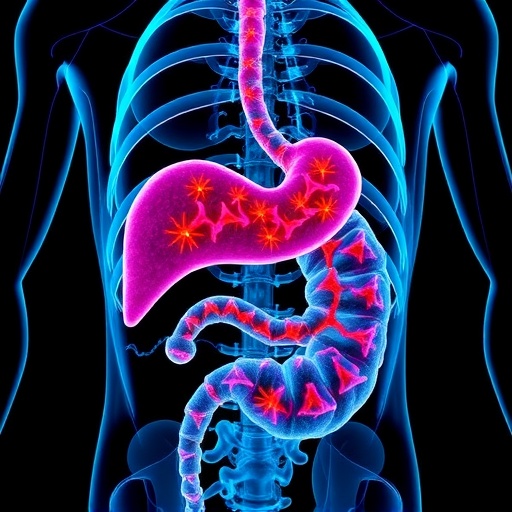
Credit: Photo by Lane Deacon / UNC Health Care.
CHAPEL HILL, N.C. – Researchers at the UNC School of Medicine believe they have isolated a protein that, when missing or depleted, can cause airway constriction, production of mucus, chest tightness, and difficulty breathing for the 334 million people worldwide who suffer from asthma.
And they're hopeful that this discovery, published today in Nature Communications, will lead to more effective treatments for asthma.
Robert Tarran, PhD, associate professor of medicine, and a member of the UNC Marsico Lung Institute, primarily focuses his research on cystic fibrosis and chronic obstructive pulmonary disease. But after identifying a protein – SPLUNC1 – in cystic fibrosis research, Tarran's colleague Steve Tilley, MD, UNC associate professor of medicine, wondered what role it might play in asthmatics.
"We first measured SPLUNC1 levels in airway samples obtained from asthmatics and normal volunteers in the UNC Center for Environmental Medicine, Asthma, and Lung Biology," Tilley said. "We were astonished to find that SPLUNC1 levels were markedly reduced in people who have asthma."
Using mouse models that were given allergens similar to people who suffer from asthma, Tilley's lab found that SPLUNC1 levels were depleted in the airways, similar to the findings in humans with asthma, and that restoring SPLUNC1 reversed airway hyper-responsiveness, which is a cardinal feature of asthma. Tarran's lab determined that SPLUNC1 could regulate contraction of the airway smooth muscle by preventing a calcium entry into smooth muscle cells, providing a mechanistic explanation of how a deficiency of this protein might lead to airway hyper-responsiveness.
"People have been studying SPLUNC1 and its role in the context of other diseases, such as cystic fibrosis and lung cancer, but we believe that we are the group to identify its role in asthma," Tarran said.
Epithelial cells that line airways produce the SPLUNC1 protein.
"We found that this protein, which is actually turned off by excessive inflammation, is needed to cause the muscle to relax. It's essentially a muscle-relaxing factor that's missing from asthma patients. It's something that normally acts as a brake," Tarran said.
A potential therapy for asthma would be to replenish either the whole protein or part of the protein, which could be delivered via a nebulizer or inhaler.
"Instances of asthma are much higher in the western world," Tarran said. "Some of the highest countries are Australia, the U.K., and the States. The cost of asthma to the healthcare system in the U.S. is quite big. Most of the asthma therapies people use are inhalers, which have been around for decades. There have only been a few new asthma medications in the past 10 or 20 years, and they're still being evaluated. This protein could be a potentially new target to go after, and it could really benefit a lot of people."
Matt Redinbo, PhD, a professor of biochemistry and biophysics, and microbiology and immunology at the UNC School of Medicine, identified the crystal structure of SPLUNC1, which Tarran said was key in developing the next steps of this research.
"Since we know the crystal structure of the protein, we're able to find the active site of the protein that regulates smooth muscle contraction," Tarran said. "So we can make peptides or drugs to target that active site and see if that works. That's one approach."
Tarran and Tilley have submitted a National Institutes of Health grant to study this hypothesis in patients.
"We want to study this in patients to correlate SPLUNC1 levels with airway hyper-reactivity," Tarran said. "And we also want to go deeper into the mechanism – how does this protein do what we observed. So there are several future avenues of research: expanding clinical studies, designing drugs in mouse studies, and then studying the underlying biology of what happens in a person with asthma."
Tilley, who has been researching asthma for the past 20 years, said the SPLUNC1 observation and its potential to reverse airway hyper-responsiveness was "the most exciting discovery that I've been involved with."
"If we can further establish that SPLUNC1 is the elusive epithelial-derived relaxing factor that is deficient in asthmatics, then we can begin working on ways to restore SPLUNC1 levels in patients as a novel therapy to treat asthma," Tilley said. "I am looking forward to working with Drs. Neil Alexis, Ilona Jaspers, and David Peden in our asthma center to design more translational studies in humans so that we can determine the clinical significance and therapeutic potential of SPLUNC1 in asthma."
###
The study was funded by the American Asthma Association and the National Institutes of Health.
Authors, in addition to Tarran and Tilley, include Tongde Wu, PhD, first author and post-doctoral fellow in Tarran's lab; Julianne Huang, UNC Department of Chemistry and UNC Marscio Lung Institute; Neil Alexis, PhD, Center for Environmental Medicine, Asthma, and Lung Biology; Matthew Redinbo, PhD, UNC Department of Chemistry; Patrick Moore, PhD, UNC Cystic Fibrosis Center/Marsico Lung Institute; Michael Little, UNC Department of Chemistry; William Walton, UNC Department of Chemistry; and Robert Fellner, PhD, post-doctoral fellow, UNC Cystic Fibrosis Center/Marsico Lung Institute.
Media Contact
Caroline Curran
[email protected]
984-974-1146
@UNC_Health_Care
############
Story Source: Materials provided by Scienmag





